(Psst: The FTC wants me to remind you that this website contains affiliate links. That means if you make a purchase from a link you click on, I might receive a small commission. This does not increase the price you’ll pay for that item nor does it decrease the awesomeness of the item. ~ Daisy)
When you think about economic problems, you probably envision all sorts of issues: food shortages, soup lines, people living in their cars, and abject poverty.
But the reality is, many of the things that will personally affect you are those day-to-day conveniences that we take for granted. So many things are automated in our modern way of life that we don’t even consider what our ancestors had to do to keep their homes running smoothly.
Let’s talk about doing your laundry without the help of a washer and dryer.
Why would you need to do this?
We all know that anything that can go wrong, and often does go wrong. While you may have a perfectly functioning washing machine now, that doesn’t mean it will always be available.
- What if water is rationed? (Not impossible – it happened a couple of years ago in California.) It takes about 30-45 gallons of water to do a load of laundry in a machine.
- What if the power goes out?
- What if your washing machine malfunctions and you can’t afford to fix it?
- What if you depend on the laundromat, but you’re out of money?
- What if you can no longer stay in your home for some reason, and the place you’re staying doesn’t have a laundry facility?
- What if you’re simply trying to cut all costs to the bare minimum, including limiting your use of public utilities?
In any of the above scenarios, being able to do your laundry by hand is a good skill to have. There’s more to it than dunking your clothes in some soapy water. Read on for complete instructions.
If you’ve never washed a load of clothing by hand, it can seem like a daunting task when you’re faced with a pile of dirty sheets, jeans, and stained socks. We had to do this when we lived at the cabin in the Algonquin Forest for the first 6 months we lived there until we finally (thankfully!) got a washing machine.
It’s hard work – the wet laundry is heavy, wringing it out is hard on your hands, and it’s time-consuming to scrub each item separately. There are some shortcuts and pieces of equipment that can make it easier. It’s a good idea to gather these specialty items now, when times aren’t as tough and they are easily accessible.
Creating Your Off-Grid Laundry Facility
There are a few pieces of equipment that can greatly lessen your work. In the old days, the lucky family had a washing machine similar to this one:
In fact, you can still get one of those if you happen to have $729.00 plus $100 shipping lying around. Check out Lehman’s if this is within your budget because it’s truly a great machine.
However, for the rest of us, there are other options.
Wonderwash Mini Washing Machine
My life would have been so much easier during those 6 off-grid months if I had owned one of these at the time. Not only are they much easier to use than leaning over the bathtub with a scrub brush, they use a lot less water as well.
This machine uses about 1-2 gallons per load. You can’t do a huge load – maybe 4-6 clothing items at a time, but the ease of use means that you still get done faster than doing one big load manually. You can also easily collect your gray water by placing the spout over a reservoir. I love mine! I used it during a recent power outage to immediately wash a white shirt that had a cup of coffee spilled on it. The shirt came out spotless in just a few minutes.
It doesn’t spin your clothes so you still have to wring them out, but there are options out there for this as well.
At the time of this posting, this washing machine is less than $70 at Amazon, with free shipping. You really want this machine. Trust me.
Clothes Wringer
If you have one of those large plastic or metal laundry room sinks – the freestanding kind, this wringer will clamp onto the side for you. I haven’t been able to swing one of those yet, but it would certainly make life easier. The worst part about doing laundry by hand is, to me, the wringing. My hands used to ache by the end of a load of jeans or sheets, and the clothes still dripped everywhere, even after wringing them for what seemed like ages.
Commercial Mop Bucket
For those of us with a smaller budget unable to purchase a specialized wringer, a janitor’s bucket works well for wringing out clothing. You’ll still need to do a small amount of wringing by hand, but it will be far easier than doing the whole process by hand.
I like this option because it can serve multiple purposes, it’s on wheels so it’s way easier to move your gray water to where you want it, and it’s a far lower price than a specialized wringer. If you never take another piece of advice that I offer, take this one: GET A COMMERCIAL GRADE MOP BUCKET.
You might be tempted to try to save a few dollars with a less expensive bucket. Don’t do it! It will NOT hold up to the rigors of laundry. The wringers on commercial buckets are built to much higher standards and made of heavier materials than the cheapo buckets at your local Wal-Mart.
This one is very similar to mine and is less than $100 at the time of posting. Amazon is offering free shipping on this product.
Washboard
For those extra dirty items (like socks) nothing will get them cleaner than an old-fashioned washboard. I don’t recommend the plastic ones that are built into a small tub. If you have a large item like a pair of jeans or a towel, it’s difficult to maneuver your laundry with those. This one is super-sturdy and is made of wood and galvanized steel. It’s very vintage looking and makes a nice decorative statement on your laundry room wall, too.
At the time of this posting, this washboard is less than $35 on Amazon (with free shipping.)
 Scrub Brush
Scrub Brush
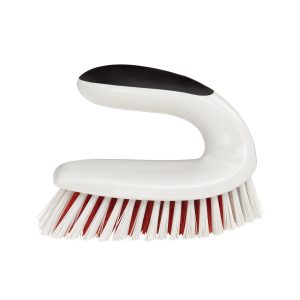
Clothes Drying Rack
A drying rack is not an absolute necessity, but depending on the time of year, your set-up, and how well you wring things out, it can be a definite boon to your off-grid laundry set-up. This particular design can hold an entire load of laundry in a very small amount of space. Ours sits in the bathtub, hidden behind the shower curtain. I use it all the time, not just during grid down scenarios, for those items I don’t want to put in the dryer. On cold days up at the cabin, I put it in the living room near the woodstove.
The heavy-duty drying rack displayed is just under $50 on Amazon, with free shipping.
How do you wash clothes by hand?
Let’s go with the most minimal amount of supplies possible. You can use your bathtub, laundry tub, kitchen sink, or a couple of large buckets.
First, gather your supplies:
- Laundry soap of choice (I use my homemade laundry soap)
- Baking Soda
- Hydrogen Peroxide
- Sturdy scrub brush
- Small bucket (I use a clean plastic kitty litter bucket)
- Janitor’s bucket with a press wringer
- Drying rack and clothespins (or method of choice)
Once you have your supplies gathered, you’re ready to wash clothes!
Here is the step-by-step:
- Fill your tub. Whatever container you’re using for laundry, fill it with hot soapy water and put in your laundry.
- Let it soak. You can let the laundry soak anywhere from half an hour to overnight. Unless your clothes are very, very dirty, you won’t have nearly as much scrubbing to do after this.
- Agitate the laundry. I use a broom handle for stirring the laundry around for the purpose of agitating laundry. You can even put the kids in there with clean bare feet to stomp all over your laundry (think about that grape-stomping episode on I love Lucy to get the appropriate mental image.)
- Scrub the laundry. Use a scrub brush and a combination of laundry soap and baking soda. This is where an old fashioned washboard would come in handy, but if you don’t have one, just use the bottom of the bathtub. Pay special attention to “dirty” areas: around collars, underarms, knees, soiled kitchen linens, socks, and undergarments.
Random, off-grid laundry tip
For the love of all things cute and fluffy, don’t wear white socks. I’ve learned that no matter how hard I scrub, nothing short of a tub full of bleach water gets our white socks looking clean, even though in terms of “sanitation” they are very clean. Investing in black socks for the stockpile will save you a lot of work, should a long-term electrical disaster ever take place.
- Some items require another session of soaking. I use homemade “oxygen cleaner” in my bucket for this: 1/8 cup each of baking soda, hydrogen peroxide, and laundry soap in approximately a half-gallon of hot water.
- Drain and refill your laundry tub. Some people add more laundry soap here but I feel like the soap on the clothing from scrubbing it is sufficient for this time around. Then allow it to soak again. I usually leave it for a couple of hours while I do other things. After the first hour, dump your items soaking in the treatment bucket into the big tub, along with the liquid in the bucket, and give it another stir.
- Rinse your laundry. Rinse your soaking bucket and drain the tub. Gently squeeze out the clothing items and let that water run down the drain or into a catchment system for flushing water. This will get some of the soap out. Add clean water to the tub, just enough to cover the laundry again. Rinse each item by swishing it vigorously through the water, then place it in the bucket that you soaked items in.
- Wring it out. Place your rinsed laundry into the wringer section of your mop bucket. Squeeze it out. Change the position of the item and squeeze it out again. This doesn’t get your clothing wrung out as well as the spin cycle on the washing machine, but it’s far more effective than wringing it out by hand. (Not to mention, way easier on your hands!) You can reuse this water by adding it to your collection of graywater.
- It’s still going to drip. No matter how well you wring out your laundry, it’s still going to drip for hours. Place your drying rack in the bathtub for a few hours. This keeps your floors dry and keeps your home from becoming excessively moist. In Europe (at least where I spent time), few people have dryers, so most people air-dry their clothing indoors in the bad weather. I usually let the laundry drip in the tub overnight.
- Move it to a better place to dry. After that, I relocate it outside, weather permitting, or by the woodstove.
This is a good skill to learn now, because in a down-grid situation, when water could be limited for a multitude of reasons, you don’t want to waste your supplies and still have laundry that isn’t very clean.
The mental aspect of being able to don fresh clean clothing when times are tough cannot be underestimated. Clean clothing is a sign of normalcy and will benefit your well-being. Even more importantly, good hygiene will help prevent the spread of disease.
Do you have an off-grid laundry set-up?
Do you have plans in place for washing clothes without your machine? Do you have some tips based on your own experience? Please share them in the comments section below.
About Daisy
Daisy Luther is a coffee-swigging, adventure-seeking, globe-trotting blogger. She is the founder and publisher of three websites. 1) The Organic Prepper, which is about current events, preparedness, self-reliance, and the pursuit of liberty; 2) The Frugalite, a website with thrifty tips and solutions to help people get a handle on their personal finances without feeling deprived; and 3) PreppersDailyNews.com, an aggregate site where you can find links to all the most important news for those who wish to be prepared. Her work is widely republished across alternative media and she has appeared in many interviews.
Daisy is the best-selling author of 5 traditionally published books, 12 self-published books, and runs a small digital publishing company with PDF guides, printables, and courses at Learn.TheOrganicPrepper.com You can find her on Facebook, Pinterest, Gab, MeWe, Parler, Instagram, and Twitter.
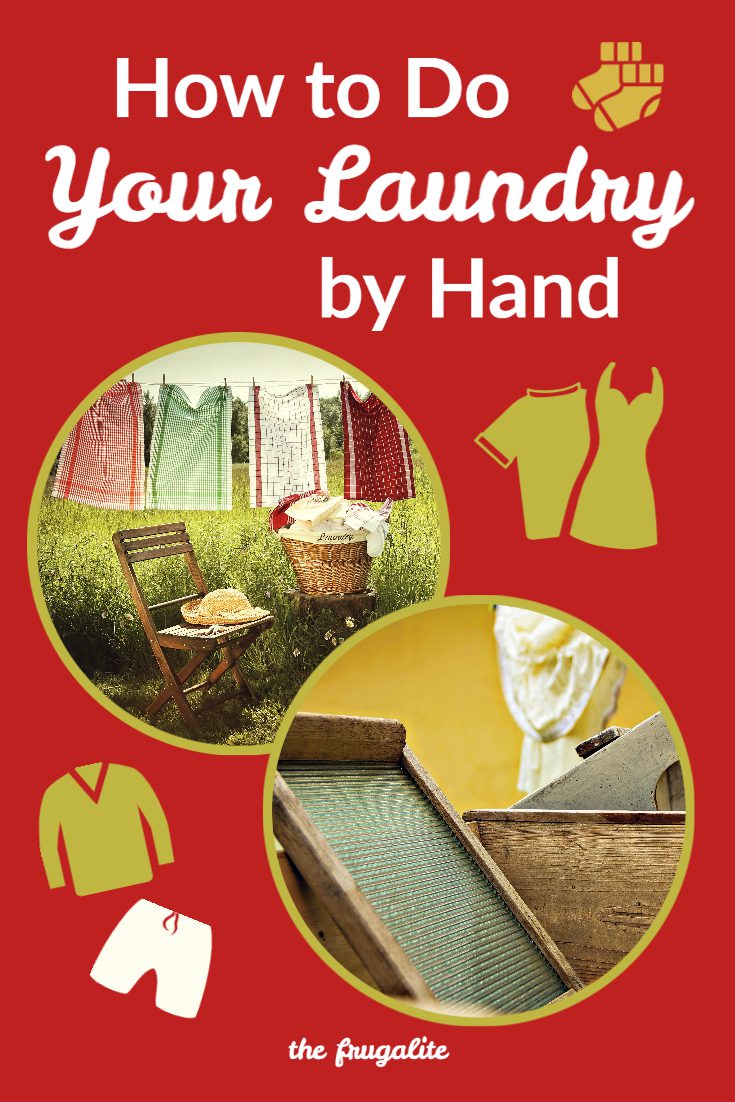

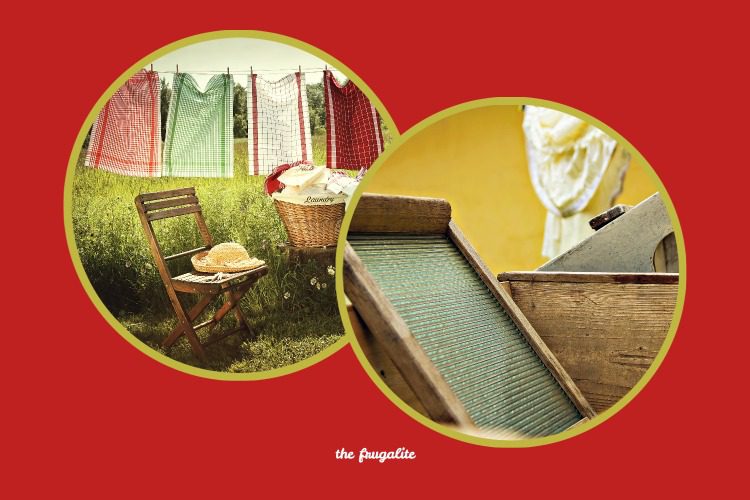
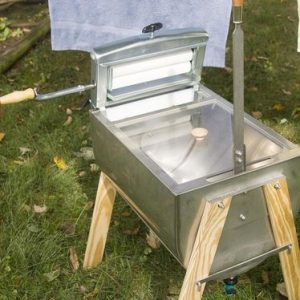
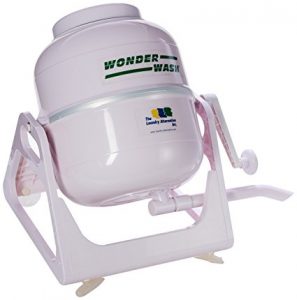
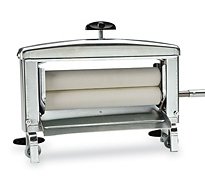
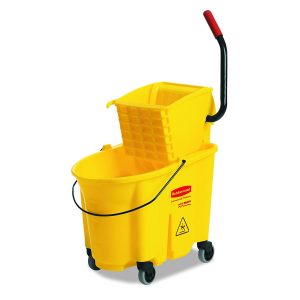
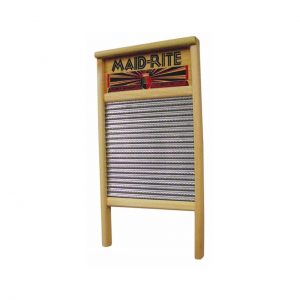
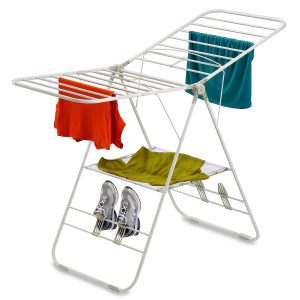




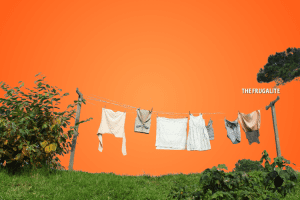




9 thoughts on “How to Do Your Laundry by Hand”
In Mexico, most people still do their laundry at a lavadero on the azotea (the flat roof). It has two concrete parts, side by side. The left side is sloped with a drain at the bottom and a corrugated concrete washboard. The right half is a basin with water and a plug at the bottom with a drain.
I lived in Mexico for several years, three summers in Morelia, a summer at the Catholic mission and secondary school of Santa Maria del Mexicano near Queretaro, and several years in Mexico City. I was mystified by the lavadero the first time I went and thought the basin with water on the right side was meant for immersing the laundry in. The women who rented me a room scolded me for getting the clean water all soapy. It was meant only for scooping up ad pouring over the clothes on the left side. Every aspect of doing laundry by hand is hard. Not only scrubbing and wringing, but rinsing all of the soap powder out of the clothes.
Also, if you want a hot shower in Mexico, in most houses you have to go to the boiler in the patio or on the azotea and insert your hand with a lit match (or in my case a twisted spill of lit newspaper) and turn the gas on. Then wait. Then remember to turn it off after your shower, which I sometimes forgot to do until the pounding started which I first thought was kids throwing a ball against the wall in the patio. No. It was like in The Shining, the pressure was building to blow up.
In Zurich I went to a Lutheran group’s old farm ways gymkhana in the Alps, a commemoration of the national author Gottfried Keller, with teams competing to do traditional tasks, like balancing on a one-legged stool to milk cows or goats and wrong wet laundry with a partner, the amount squeezed out being measured for the competition.
I lived in an apartment in a blokhus in Stockholm built in 1930. Every apartment had a small storage room in the basement for things like bicycles. When I went down there, I saw it had an old mangle from the ‘30s, used to wring water from wet laundry. I don’t know how long it had sat there without being used.
When my parents were children, a woman came to their houses once a week with her large iron kettle to boil water on the lawn to wash the family’s clothes. I can’t even conceive of the clockwork ordeal of all of this.
I live in an apartment with very hard well water that is softened with a water softener. Washing by hand is fine, but letting it dry inside (because no clothesline outside since it’s an apartment) leaves everything stiff as cardboard. So I rinse in vinegar water and that softens things up a lot, but it’s still not quite as soft as a dryer or clothesline in awindy area.
Alternative to the wringer bucket – which isn’t cheap to buy new – is a standard five gallon bucket and a clean toilet plunger. You plunge up and down and it saves your back as well as water. My folks did that quite a bit when I was a kid.
I remember hauling water for my grandmother on laundry day! She had one of those first generation roller machines, the kind that would smash your hand to pieces if caught in that roller. It did take her all day to wash, and clothes were hung in the attic in winter to dry.
I always say that our technology happened because our grandparents got tired of doing things the hard way. Which we may be getting back to sooner than we think. I’ve been hanging my lighter clothes on a rack to dry, to save on the gas bill. Might as well get started!
Using a plunger to wash clothes works for most things. Just move it up and down on the clothes in the bathtub or
or wherever you are washing. some things will have to be scrubbed, but not near as many as you think. I did the washing like this when we lived in a camper. It was much easier than scrubbing. Then drain the rinse water and use the plunger so wringing is easier(?).
When we were very poor. I washed all our laundry in the tub. I stirred with a broom handle and wrung it out with my hands. Then I usually left it to dry over the shower curtain rod. It was an everyday thing for me. Not easy. But I did it. If something was dirty I just rubbed the material together and dunked it in the water.
The Lavario is a really great washer and can be found at https://lavariowasher.com/. I bought one and love it. You can even accomplish some wringing out by putting the laundry in the bottom and then just pressing with the basket. It will all make sense once you see the product and understands how it works. I’d encourage anyone who goes to the website to explore the tabs at the top for full information. And, no, I don’t work for the company nor will I gain in any way from mentioning this. I just think it’s a great product (better than the Wonder Washer) and for some reason many don’t know about it. While it is available on Amazon for the same price as the website, probably most of us who read TOP agree it’s better to do business with the little guy. Besides, you will be offered a savings of $10 (although it varies) when you first go to the website, and since shipping is free within the lower 48, that means it’s less expensive than Amazon!
I’ve been doing my laundry by hand for a couple of years now, ever since I got sick of the washer and dryer in my apartment building never functioning properly. I use free buckets I got from an area laundromat that has a wash service (the manager saves all of the commercial soap buckets and gives them to whoever needs them). I use one to soak my stuff and the other to rinse, and fill the first one with clean water if the clothes need an extra rinse. Then I use regular sturdy plastic hangers to hang them up on a tension shower rod across the tub (it’s in a recess in the wall). Once they stop dripping, I move the laundry to the curtain rod in the bedroom. That gets lots of sun and a good breeze in the summer (plus my fan) and in winter I have baseboard heat. Even in humid weather clothes don’t usually take more than a couple of days to dry. I use Zote laundry bars (grated) and give it a boost with a little Fels Naptha, (also grated) and agitate the laundry with a regular sink plunger. I have a small plastic washboard which is fine for spot scrubbing.
This system has worked well for me and has saved me about $5 a week from the laundry room. It doesn’t really take more active time than taking my laundry down from the third floor to the basement, going back down to transfer it to the dryer, and going back a third time to get it. I also don’t have to worry about the machines working or not being free to use.
Plus, you get a good workout!?
This is a very helpful article.